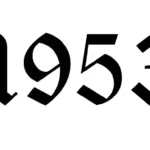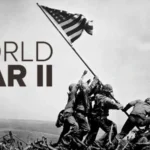
World War I was a horrific event that affected the entire world. It was a conflict between the Allied Powers and the Central Powers that spanned from July 28th, 1914 to November 11th, 1918. During the war, millions of soldiers, sailors, and civilians were killed, wounded, or made homeless. Even after the war had ended, the effects of the conflict lingered on for many years.
The causes of World War I are many and complex, but the primary cause was the assassination of Archduke Franz Ferdinand of Austria-Hungary. On June 28th, 1914, a Serbian nationalist assassinated the archduke in Sarajevo, Bosnia. This event set off a chain reaction of events that ultimately led to the outbreak of war.
In the years leading up to World War I, Europe was becoming increasingly militarized. Countries were competing with each other to build the largest and most powerful armies. Nations formed alliances with each other, pledging to come to each other’s aid if attacked. These alliances were the main cause of the war, as they meant that if one country attacked another, the other countries in the alliance would be forced to join the conflict.
The Central Powers, composed of Germany, Austria-Hungary, the Ottoman Empire, and Bulgaria, were facing off against the Allied Powers, which included the United Kingdom, France, Russia, Italy, and the United States. Throughout the course of the war, the Central Powers were put on the defensive, as the Allied Powers had superior resources and manpower.
In the early stages of the war, the Germans launched an offensive into France. The German army was able to make quick progress, but the offensive was stopped at the Battle of the Marne. This battle was the first major Allied victory of the war, and it marked the beginning of a long period of trench warfare.
Trench warfare was a form of combat where opposing forces would dig trenches and fight from them. These trenches were often filled with mud, water, and corpses, and they were dangerous places to be. The conditions in the trenches were horrible, and many soldiers suffered from disease, exhaustion, and malnutrition.
The war was fought on land, at sea, and in the air. The German U-boats were used to sink Allied ships, while the British and French navies were used to protect the supply lines of the Allied forces. In the air, the Germans were the first to deploy the use of aircraft, which gave them an advantage in the early stages of the war.
The war also caused a massive amount of destruction. Cities and towns were destroyed by artillery fire, and chemical weapons such as chlorine and mustard gas were used to devastating effect. The war also caused a huge loss of life, with estimates of the total number of dead ranging from 9 million to 16 million.
When the war finally ended in November of 1918, the Central Powers had been defeated and the Allied Powers had emerged victorious. The Treaty of Versailles was signed in 1919, and it imposed harsh terms on the Central Powers. Germany was forced to pay massive reparations, take full responsibility for the war, and limit its military.
The consequences of World War I were severe. The war had caused massive destruction and loss of life, and it had destabilized the world order. It also set the stage for the even more destructive World War II, which would begin just two decades after the end of World War I.
World War I was one of the most horrific events in human history. It caused immense suffering and tragedy, and its effects are still felt today. However, it also marked a new era in warfare, and it changed the face of the world forever.









